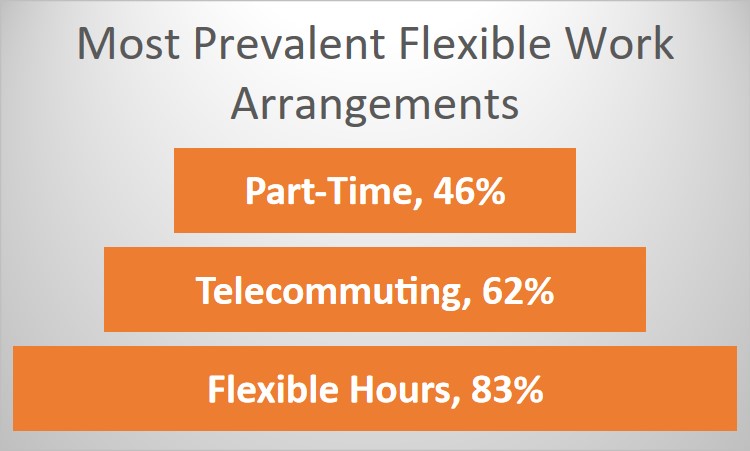
By Jason Rowe, courtesy SBAM Approved Partner ASE
Michigan employers see value in providing their employees flexible work arrangements, with two-thirds offering some form of the benefit. Over half of employers market their flexibility arrangements as an employee benefit to attract new talent, as is shown in ASE’s recently released Workplace Flexibility Survey. This is the first-ever Workplace Flexibility Survey conducted by ASE.
Some insights uncovered by the Workplace Flexibility Survey include:
-
The most prevalent flexible work arrangement offered by organizations was flexible hours/flextime (83%). This was followed by telecommuting, with 62% offering the benefit, and 46% allowing part-time schedules.
-
Most organizations that utilize flexible hours/flextime allow employees to have varied start and end times (96%). Most organizations require employees to be present for core hours (79%).
-
Telecommuting arrangements are most frequently allowed at the discretion of the manager (79%) and are offered on an ad-hoc basis (77%).
-
Technology has made telecommuting more efficient and viable. 54% of respondents indicate using some form of collaboration software and another 52% indicate utilizing some form of video conferencing. Instant messaging, popularized in the mid and late 90’s, was utilized by 75% of those surveyed.
-
11% of organizations offer paid parental leave beyond FMLA, short-term disability, or what is required by law. For birth mothers, fathers, and adoptive parents, most organizations gave employees their full pay while on the parental leave.
-
18% of organizations offer summer/seasonal hours, and a majority of them use a compressed workweek (38%). The most popular form of the compressed work week is a 4/40 schedule where employees work four 10-hour days per week.
Workplace flexibility continues to be a priority in a society that craves a better work/life balance. In time, Michigan will likely see a greater shift away from the traditional 9-5 workplace schedule towards an arrangement that allows employees to feel less constrained by the demands of working inside of an office.